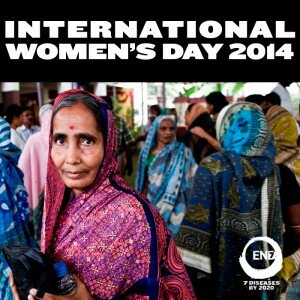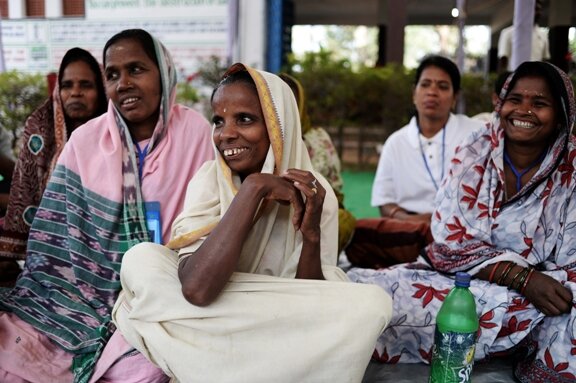In honor of International Women’s Day, I’m sharing the stories of a group of women living in Orissa State, India. Last month, I had the opportunity to travel to a community center in Banamalipur run by the Church’s Auxiliary for Social Action (CASA), an NGO that works on a range of development and health issues, including morbidity management and disability prevention from lymphatic filariasis (LF). LF is a painful and disfiguring neglected tropical disease (NTD) that impacts more than 20 million people across India.
At the community center, I was introduced to a group of women suffering from the impacts of long-term LF infection. Many of them were grandmothers and mothers, and while we needed a translator to speak to each other, we were full of smiles and eager to learn about one another.
The women I met spoke openly and honestly with me about the challenges they face as women living with LF. Some of the women described how their disease impacted not only themselves, but their daughters as well.
Sulochana Behara, 43, from Dhalapathar village, for example, has five healthy daughters for whom she’s having trouble finding grooms; many people incorrectly believe that the swelling of her leg caused by LF is hereditary and that her daughters will also develop this same disability.
The visible signs of LF, which include swelling and inflammation of the extremities, often do not present themselves until adult age. In fact, the average age of the individuals with LF that CASA works with is about 57. Yet one woman I met explained she began noticing symptoms when she was only 12 years old. Now 40, she explained with tears in her eyes that she never married because of the stigma she faced.
In addition to the social stigma, LF also makes it hard for women to work and live comfortably. Many women explained that even working at home was difficult and that they couldn’t sit in certain positions for long periods of time because of the pain they suffered.
For these women, CASA is a welcomed respite from the stigma and challenges they often face as women living with LF. Staff and volunteers who work at CASA help the women wash and care for their swollen legs. The health workers carefully cleanse the women’s skin to remove bacteria. This process can reduce or reverse skin or tissue damage. This type of care does not cure, but can manage, the symptoms and progression of LF.
Unfortunately, the experiences of the women I met are not unique. Millions of women in India are living with or are at risk of contracting LF. As a whole, India bears 45 percent of the world’s population living at risk for LF.
 I am hopeful that with the support of our celebrity Ambassador, Abhishek Bachchan who accompanied me on the trip, we can help give voice to the stories and experiences of these women and end the stigma that they face. I am also hopeful that India’s efforts to eliminate LF will help protect millions of women from having to deal with the pain, disability and stigma of LF.
I am hopeful that with the support of our celebrity Ambassador, Abhishek Bachchan who accompanied me on the trip, we can help give voice to the stories and experiences of these women and end the stigma that they face. I am also hopeful that India’s efforts to eliminate LF will help protect millions of women from having to deal with the pain, disability and stigma of LF.
This International Women’s day, let’s share these women’s stories and raise the awareness needed to ensure that no woman lives a life of pain and stigmatization due to this preventable disease.
photos by Vivek Singh


